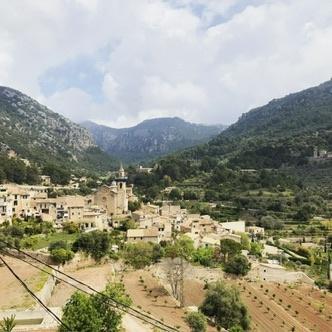How can travelers observe the effects of Mallorca’s land use history during their visit?
Similar Topics
mallorca land use
dry stone terraces
serra de tramuntana
agricultural heritage
rural architecture
traditional fincas
coastal tourism impact
protected natural parks
Travelers visiting Mallorca can observe the effects of the island’s land use history throughout its diverse landscapes and built environment. The agricultural heritage is particularly evident in the patchwork of dry stone terraces that contour the hillsides, especially in regions like the Serra de Tramuntana. These terraces were painstakingly constructed centuries ago to prevent soil erosion and maximize arable land on the rugged terrain. As visitors hike or drive through these areas, they will notice the blend of ancient farming practices with modern agriculture, reflecting a continuous relationship between the people and the land.
In addition to agricultural patterns, the legacy of past land uses can be seen in Mallorca’s rural architecture. Traditional fincas, or country estates, are scattered across the island, often surrounded by olive and almond groves. These stone farmhouses provide insight into historical rural life and estate management, illustrating how land was organized and utilized. In coastal zones, the expansion of tourism has transformed some of the traditional fishing villages and farmland into resort areas, yet careful planning in protected areas has helped preserve significant patches of natural and agricultural landscapes.
Visitors can also explore Mallorca’s towns and villages, where historical land use is reflected in the urban layout and building styles. Many settlements grew from agricultural hubs into commercial centers while retaining their traditional charm. Markets selling local produce highlight the ongoing importance of agriculture. Additionally, protected natural parks preserve the island’s native flora, which coexists with cultivated lands, offering a living record of environmental and land management through time. By paying attention to these elements, travelers gain a richer appreciation of how Mallorca’s past continues to shape its present landscape and cultural identity.
In addition to agricultural patterns, the legacy of past land uses can be seen in Mallorca’s rural architecture. Traditional fincas, or country estates, are scattered across the island, often surrounded by olive and almond groves. These stone farmhouses provide insight into historical rural life and estate management, illustrating how land was organized and utilized. In coastal zones, the expansion of tourism has transformed some of the traditional fishing villages and farmland into resort areas, yet careful planning in protected areas has helped preserve significant patches of natural and agricultural landscapes.
Visitors can also explore Mallorca’s towns and villages, where historical land use is reflected in the urban layout and building styles. Many settlements grew from agricultural hubs into commercial centers while retaining their traditional charm. Markets selling local produce highlight the ongoing importance of agriculture. Additionally, protected natural parks preserve the island’s native flora, which coexists with cultivated lands, offering a living record of environmental and land management through time. By paying attention to these elements, travelers gain a richer appreciation of how Mallorca’s past continues to shape its present landscape and cultural identity.
🧩 Related Questions
Related Question
Are there any special services or support available for tourists who have experienced minor offenses in Mallorca?
Related Question
What precautions did Mallorcans take to protect themselves from pirates?
Related Question
What role did piracy threats play in shaping the island’s coastal defenses and settlements?
